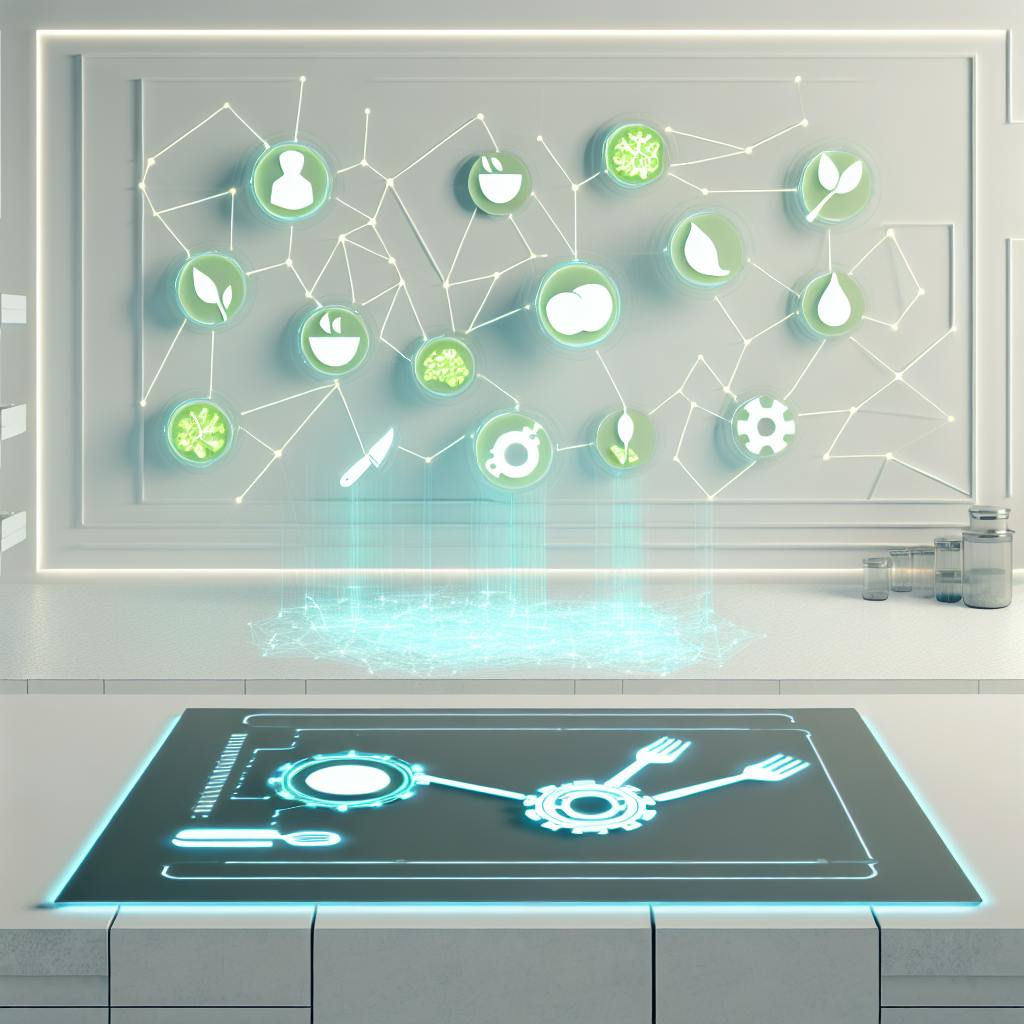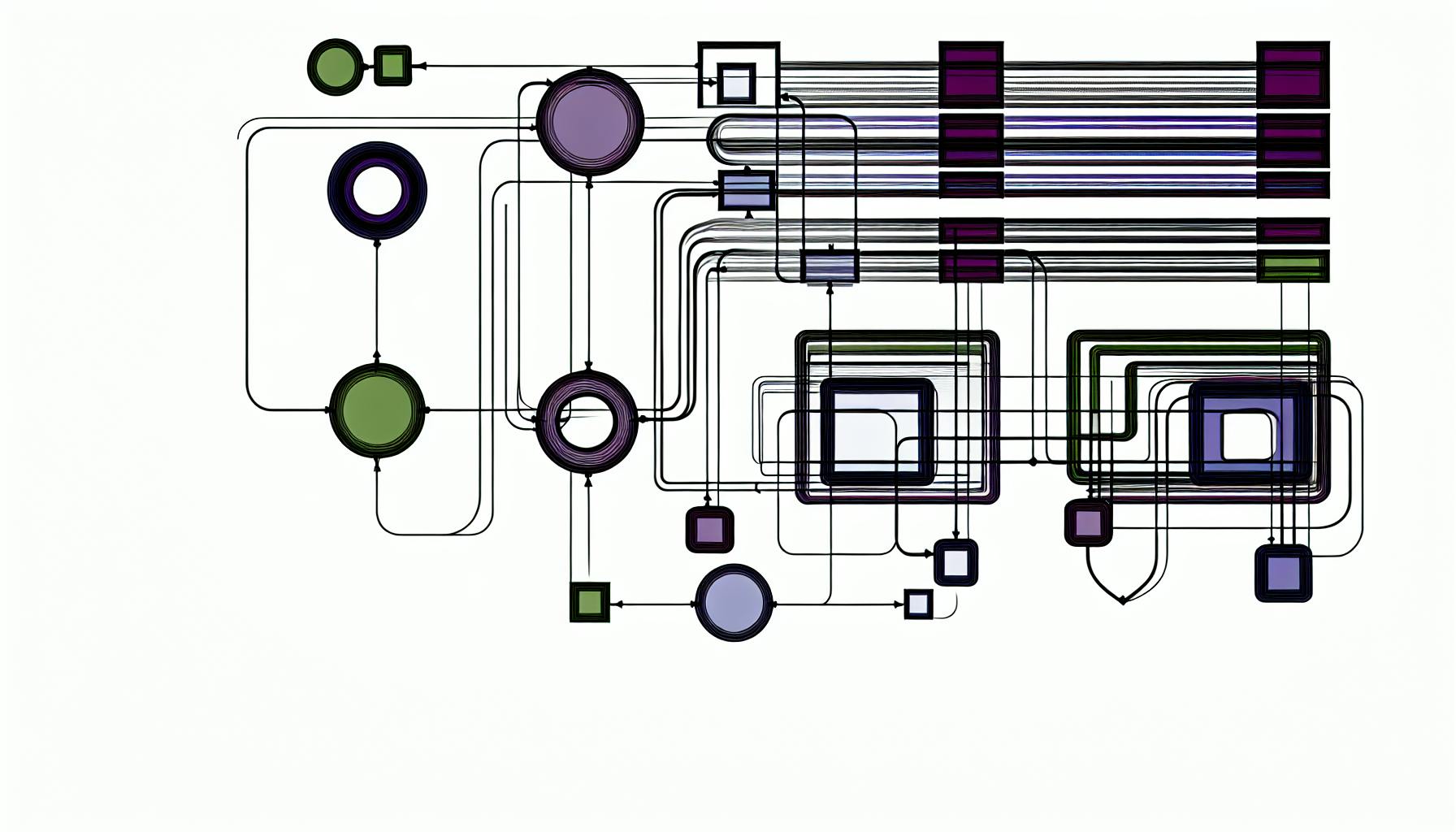Meal prepping services must tackle complex operations to meet rising customer demands.
This article explores the essential software features to streamline meal prep operations, boost customer experience, and scale your business.
You'll discover critical capabilities like order management, inventory planning, batch cooking workflow, and delivery tracking to optimize your meal prep service.
The Rise of Meal Prepping Services
Meal prepping for others has emerged as a growing industry, fueled by busy professionals and health-conscious consumers looking for convenient, nutritious meals. As demand increases, technology plays a pivotal role in enabling meal prep businesses to efficiently manage orders, plan production, and deliver at scale.
Understanding the Meal Prep Business Model
The meal prep service model involves preparing dishes in bulk based on that week's menu, then packaging individual meals for pickup or delivery. Customers choose meals à la carte or select a full week's worth of meals tailored to their dietary needs and preferences. Technology helps by:
- Streamlining online ordering and payments
- Tracking customer preferences and purchase history
- Planning weekly production batches based on order demand
- Creating nutritional labels and packing slips
This allows owners to focus on food preparation while running the business more efficiently.
Customer Expectations in the Meal Prep Market
Customers choose meal prep services for the convenience, health-conscious options, and consistent quality. Their expectations include:
- Flexible ordering like à la carte, meal plans, etc.
- Accurate nutritional information and ingredients
- Option to filter for diets or allergies
- High-quality ingredients and skilled preparation
- Consistent flavor and freshness week-to-week
- Timely delivery/pickup
The right software helps businesses consistently meet and exceed these standards at scale.
Leveraging Software for Meal Prep Service Scalability
As a meal prep business grows, manual order and menu management becomes unfeasible. Software tools help owners effectively:
- Track order history and customer preferences
- Update menus and nutritional information
- Schedule production for upcoming weeks
- Manage delivery routes and drivers
- Provide customers easy online ordering and payments
This enables scaling meal production and delivery while providing a seamless customer experience. The result is growth unconstrained by operational bottlenecks.
Can I make money meal prepping for people?
Meal prepping can certainly be a profitable business if done right. Here are a few key factors to consider:
-
Conduct market research to determine demand and ideal pricing in your area. Competition, ingredient costs, and labor will impact your margins.
-
Create an efficient kitchen workflow to prep quality meals at a good pace. Investing in tools like food processors and labeling printers can boost productivity.
-
Leverage meal prep software to simplify menu planning, order taking, payment processing, and delivery/pickup management. This saves considerable time and minimizes errors.
-
Focus on customer retention through top-notch service, flexibility around preferences/allergies, and rotating weekly specials to keep things fresh. High retention means steady business.
-
Aim for 10-20% profit margins based on your market and operating costs. This provides income while keeping meal prices reasonable for customers. Adjust pricing as needed.
With thorough planning and efficient systems, meal preppers can operate cost-effective businesses that meet customer demand and generate respectable profits over time through retention and referrals. The key is managing the prep process smoothly.
How much should I charge to meal prep for someone?
Determining your pricing as a meal prep service can be tricky. Here are some tips:
-
Consider your costs: Account for ingredients, supplies, kitchen rental, equipment, delivery, labor, etc. Build in a profit margin of at least 30%.
-
Research competitors: Search online directories and social media to see what other local meal prep companies charge. Aim to be competitive.
-
Factor in value: Don't just consider costs. What is the value to customers of healthy, customized, convenient meals? Price accordingly.
-
Offer tiered plans: Provide options like 5 meals/week, 10 meals/week, 20 meals/week. Offer discounts for higher tiers.
-
Be flexible: Have some wiggle room to negotiate, offer promotions, or give loyalty rewards. But don't undervalue your service.
-
Review often: Re-evaluate pricing every 6 months as your business grows. Make small increases over time.
Ideally, for a full week of meals (14-21 meals), most meal prep services charge $150-$300. Price per meal ranges from $8-$15 depending on order size. Start on the lower end as you build clientele and perfect operations. Don't be afraid to charge what you deserve for providing an invaluable service!
How do I make a meal plan for others?
Meal planning for others requires careful consideration of your clients' needs, preferences, and goals. Here are some tips for creating customized meal plans that your clients will love:
Conduct a Meal Planning Assessment
Before creating a meal plan, have your clients fill out a questionnaire covering their dietary requirements, food preferences, health goals, schedule and lifestyle factors. This ensures you craft meal plans aligned to their unique needs.
Create Realistic, Enjoyable Meal Plans
Design balanced, varied weekly meal plans featuring simple, tasty recipes your clients will genuinely enjoy preparing and eating. Build in flexibility so they can swap dishes if needed. Keep the plans realistic based on your clients' cooking abilities and time constraints.
Provide an Itemized Grocery List
Take the guesswork out of shopping by providing an itemized grocery list for each weekly meal plan. List all ingredients required for every recipe so clients know exactly what to purchase.
Include Prep Instructions
Provide clear prep instructions detailing steps required before cooking each recipe. List prep tasks like chopping veggies or marinating meat with suggested timelines. Thorough prep guides make executing meal plans simpler.
Bundle Plans into Packages
Bundle customized meal plans, grocery lists, recipes and prep guides into neatly packaged sets for each client. Offering complete ready-to-use meal planning kits makes following personalized plans straightforward for clients.
Follow Up and Adjust Accordingly
Check in with clients periodically to see how they're finding the meal plans and if any adjustments are needed. Be ready to tweak plans based on changing needs, schedules or preferences. Responsive support is key!
With careful client assessments, realistic recipe plans, and comprehensive support materials, you can create meal plans your clients can easily implement and enjoy!
sbb-itb-3666cb4
How to do a meal prep with friends?
Meal prepping with friends can be a fun and efficient way to batch cook healthy meals. Here is a 10 step guide to hosting a successful meal prep party:
Step 1: Invite Friends and Pick a Date
- Decide on 4-6 friends to invite over. Keep the group small enough to fit in your kitchen.
- Send out invites through a Facebook event, group message, or email.
- Pick a date and time that works for everyone. Sunday afternoons tend to work well.
Step 2: Gather Dietary Preferences and Allergies
- Create a spreadsheet and have everyone note preferences like:
- Diets (vegetarian, vegan, keto)
- Allergies (nuts, soy, gluten)
- Disliked foods
- Use this to plan meals with options everyone can eat.
Step 3: Plan a Menu
- Choose recipes with versatile ingredients that can be customized per person.
- Good options include bowls, salads, skillet meals, casseroles, and soups.
- Make sure to include vegetarian, vegan, dairy-free, etc options.
Step 4: Create a Shopping List
- Compile a master list of ingredients needed for all recipes.
- Send this out in advance and have people sign up to bring items.
Step 5: Prep Your Kitchen
- Clear fridge and counter space for prepping.
- Have cutting boards, knives, pans, containers, and labels on hand.
- Play fun music to set the mood!
Following these steps will help your meal prep party run smoothly. Let the chopping, cooking, and batching begin!
Essential Software Features for Meal Prep Success
The core components that a software solution must contain to manage key aspects of a meal prep business, from order taking to delivery tracking.
Seamless Order Management Systems
Details on key features like order capture across channels, customization options, automated confirmations and reminders that make the ordering process smooth for customers.
- Offer online ordering through a custom, mobile-friendly website to capture meal subscriptions, one-time orders, and catering requests
- Integration with third-party platforms like Shopify allows orders from multiple channels to flow into one system
- Customers can build personalized meal plans from ingredients and recipes, selecting delivery dates and quantities
- The platform sends order confirmations and reminder notifications automatically via email and text
- Accept payments online via Stripe integration, PayPal, and other methods to keep the process quick and secure
Efficient Menu Planning and Inventory Control
How the software helps streamline menu creation and planning based on availability and profitability. Also covers ingredient-level inventory.
- Built-in recipe builder lets you cost out each meal and set target margins for profitability checks
- Software suggests profitable meals based on current ingredient costs and availability
- Manage a searchable ingredients database integrated with vendors for easy reordering
- Get notifications when stock of key ingredients runs low to avoid menu disruptions
- Software updates menus and notifies customers of any ingredient substitutions
Streamlining Batch Cooking and Kitchen Task Management
Functionality to schedule meal prep batches, assign tasks to staff, and sequence activities for efficient kitchen operations.
- Schedule the production of upcoming meal batches and divide tasks by station
- Print prep sheets, shopping lists, and recipe cards to keep stations stocked and on track
- Monitor progress and set alerts for handoffs between prep, cook, and package stages
- Label printed stickers for each meal with ingredients and heating instructions
Optimized Delivery Scheduling and Real-Time Tracking
Solutions for route optimization, driver dispatch, automated customer notifications, and real-time tracking during delivery.
- Optimize delivery routes based on volume, location, and time window
- Dispatch drivers and track vehicles in real-time with mobile GPS integration
- Customers receive automated texts when driver is en route and when delivery is complete
- Drivers can take pictures of delivered orders for confirmation, and log any issues
Enhancing Customer Experience with Advanced Software Features
Personalizing the customer experience is key to building loyalty and driving repeat business. Meal prep software that tracks customer preferences and order history can enable services to provide a more tailored, VIP-style experience.
Personalizing with Customer Preferences Tracking
- Capture important customer details like food allergies, dietary preferences (vegetarian, keto, etc.), and taste preferences during account signup and from feedback forms after each order.
- Maintain profiles for each customer showing their order history and special requests to reference for future orders.
- Set rules to automatically apply saved customer preferences to new orders, removing the hassle of re-entering details each time.
- Send customized email campaigns promoting menu items that match documented customer preferences and restrictions for better conversion rates.
Boosting Sales with Integrated Promotions and Upselling
- Built-in tools to easily create sitewide sales, individual promotions sent to select customers, first-time buyer discounts, referral rewards programs, and more.
- Upsell additional items, upgrades, or subscriptions during checkout based on order contents and customer order history data.
- Offer convenience-focused subscriptions for contactless payments, free delivery, exclusive menu access, etc. with automated recurring billing.
- Track performance of different promotions and upsell offers to double down on what converts best.
Data-Driven Decision Making with Analytics and Reporting
- Gain visibility into customer lifetime value with reports on average order sizes, order frequencies, churn rates, and more.
- See best selling and most commonly substituted meals and ingredients to optimize menu planning and purchasing.
- Identify peak order times during the day or days during the week to align staffing and streamline operations.
- Compare performance across pickup locations and delivery zones to determine most profitable service areas to focus growth efforts.
With robust customer data tracking and built-in sales features, meal services can focus more on food quality while letting the software handle maximizing customer lifetime value.
Choosing the Right Software for Meal Prepping Services
As a meal prep service owner, choosing the right software platform to manage your business operations efficiently is crucial to success. When evaluating options, key factors to consider include:
Evaluating Scalability and Performance
-
Can the software seamlessly handle an increasing volume of orders without performance issues or feature limitations? As your customer base grows, you need a solution that scales.
-
Check if the solution offers unlimited menu items, recipes, ingredients etc. Restrictions here can hinder menu creativity down the line.
-
Review the order volume and transaction processing capacity to ensure it meets your projected growth. Slow or crashing systems create bottlenecks.
Determining Industry-Specific Feature Relevance
-
Seek out software designed specifically for meal prep services, not generic food delivery platforms. You need unique features like automated meal planning and scheduling, label printing, and rotating menus.
-
Ensure features directly meet niche workflow needs - managing ingredients/recipes, scheduling preparation and delivery days/times, facilitating quick customization, etc.
-
Verify software seamlessly handles your core business operations - taking orders, tracking preferences, processing payments, managing communication with customers.
Assessing User-Friendliness for Staff and Customers
-
An intuitive, easy-to-use interface enables quick staff onboarding and management. Complex systems waste valuable time better spent preparing quality meals.
-
Customers should find online menus and ordering simple and mobile-friendly. Difficult user experiences increase cart abandonment.
-
Both staff and customers require self-service options - FAQs, support docs, account management etc. Reliance on support tickets creates delays.
When vetting options, prioritize software built ground-up for the unique workflows of meal prep over generic offerings. Scalability, niche-specific features, and ease of use should top the checklist. The right platform empowers efficiency, fosters growth and enhances customer experience.
Conclusion: The Impact of Software on Meal Prep Services
A purpose-built software platform can have a tremendous impact on the operations and success of a meal prep service. By automating tedious tasks and streamlining processes, software boosts efficiency, allowing the business to deliver exceptional service.
Key benefits include:
-
Order Management: Software centralizes and organizes orders, customer data, and payments in one integrated system accessible across devices. This eliminates manual order tracking and speeds up order fulfillment.
-
Delivery Optimization: Route optimization features schedule the most efficient delivery routes based on location. This cuts fuel costs and gets meals to customers faster.
-
Inventory Tracking: Real-time reporting provides ingredient levels, upcoming order volumes, and insights to prevent shortages or waste. This takes the guesswork out of shopping and production.
-
Customer Profiles: Detailed profiles capture preferences, allergies, and past order history so custom meals can be tailored and suggested automatically. This personal touch drives loyalty.
-
Scalability: Cloud-based software supports business growth by easily adding new delivery zones, recipes, staff accounts, etc. Built-in flexibility prevents slowdowns as order volume expands.
By leveraging the right software platform, emerging meal prep services can boost customer satisfaction, ensure reliable and efficient operations, and sustain profitability over the long term even during periods of rapid growth. The result is a streamlined business primed for lasting success.



